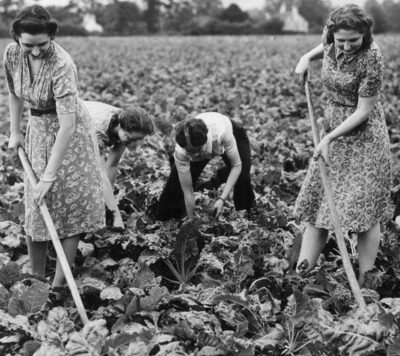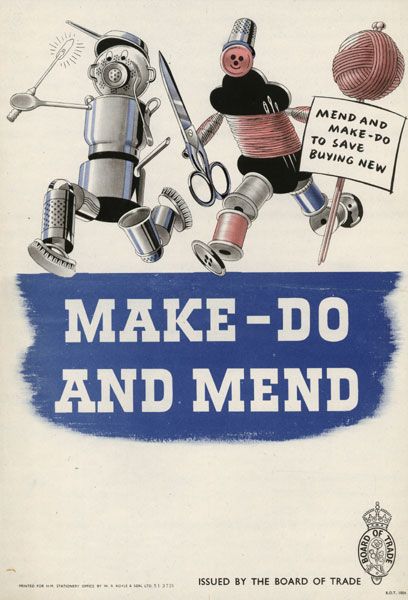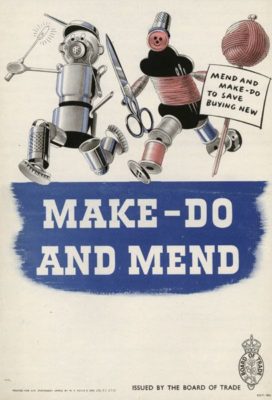 Make-Do & Mend
Make-Do & Mend
Make-Do & Mend continues the History Group’s World War 2 theme with a talk from Liz Bruce & Mary Dean about ‘Life on the Home Front’. Liz & Mary are members of the Frinton and Walton Heritage Trust; the talk will also include a culinary treat with some wartime recipes to taste.
The talk will take place in the Orpen Hall starting at 7:30 pm on Wednesday 11th April. Members pay £2, visitors, who are most welcome to attend, pay £4.
Where did Make-do & Mend start?
During World War Two, clothes rationing come into effect in Britain on the 1st June 1941, lasting until March 1949. Initially, clothes were rationed on a points system but no clothing coupons were issued. Britons were asked to hand over their unused margarine coupons if they wanted a new item of clothing. In 1943, the Government issued a Make Do and Mend pamphlet which was:
…intended to help you to get the last possible ounce of wear out of all of your clothes and household things…No doubt there are as many ways of patching or darning as there are of cooking potatoes.
It was commonplace for woollen clothes, in particular, to be recycled with them being unravelled unto useable balls of wool.

Last Meeting – AGM & WW2 Digging For Victory
AGM
Held on March 8th, the minutes for last year were agreed and the financial report accepted. As usual the committee offered themselves for re-election and were re-elected on block. The committee for this year is Peter Noakes Chairman, Gill Poole Secretary and Treasurer. The other committee members are Maxwell Meadows, Dorothy Taylor, Nigel Boyce Brown and Peter Jones.
Digging for Victory
After the AGM refreshments were served, followed by a short film, introduced by Peter Jones about life on the home front in WW2. The immediate problem that faced the country when the war started was a food shortage. This was overcome by rationing and “Digging for Victory” when every available piece of land was turned to agriculture. The film was about life on the farm in WW2, using farming techniques and equipment from the 1940s to grow food. The film also went into a wartime kitchen to try out some of the wartime recipes.



